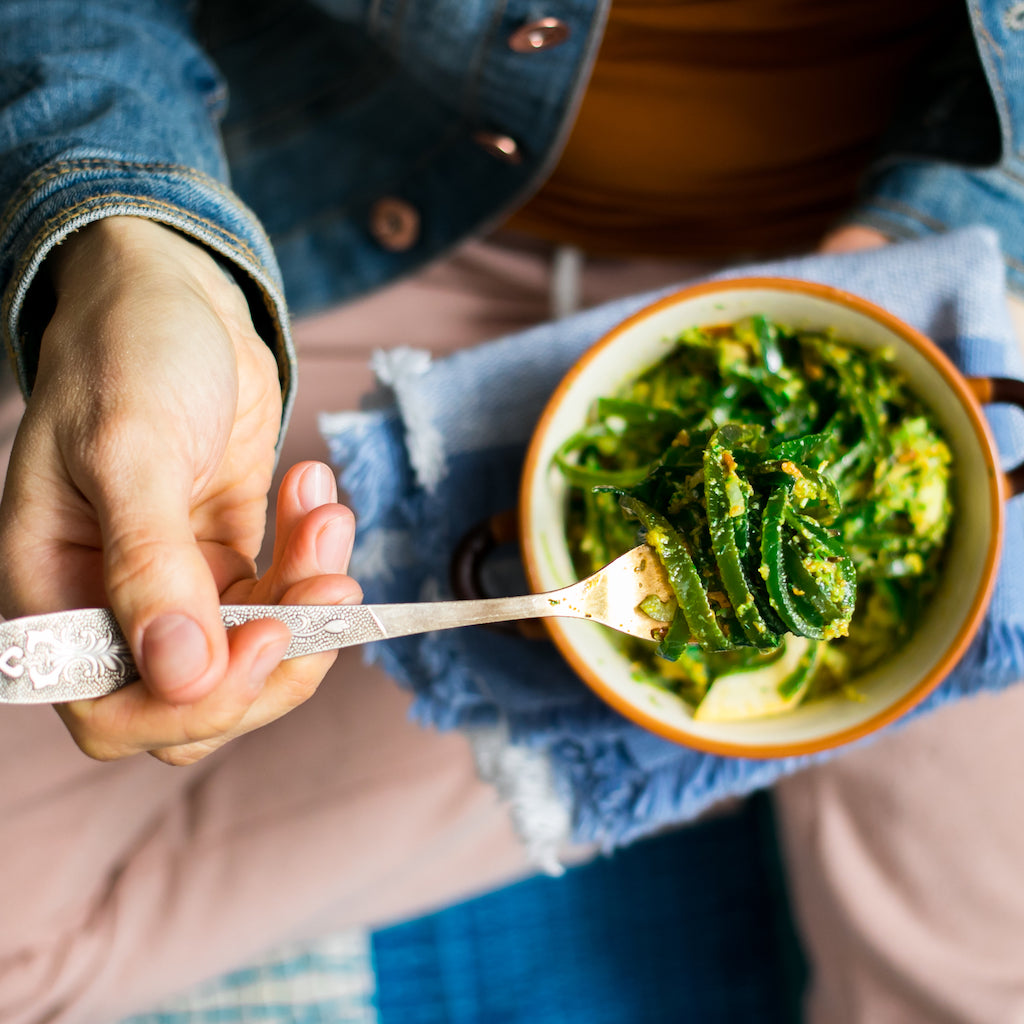This sea-sourced superfood is quickly becoming one of the most popular plant-based ingredients out there, but what’s the best way to include it in your daily diet?
Despite having been consumed consistently for millions of years,[1] the popularity of seaweed as a ‘superfood’ has skyrocketed in recent times.[2] From sushi to salad to smoothies, seaweed-infused meals and snacks are quickly becoming the norm, offering a range of benefits for your health and wellbeing.
But with so many ways to consume seaweed, how do you know where to begin? We’re going to take a closer look at what exactly makes seaweed so good for your health, as well as exploring some of the key ways to include seaweed in your daily diet.
Why seaweed is so important for your health . . . especially if you’re vegan

If you’re a regular reader of our blog, then you’ll already be familiar with the importance of seaweed for addressing iodine deficiency. Iodine is an essential nutrient that supports our thyroid health, our metabolism, our cognitive development and more. Yet the UK is one of two high-income countries with iodine deficiency issues, with the issue particularly common in teenage girls, young women and pregnant people.[3]
And iodine deficiency is also a growing issue among vegans. More and more people are choosing to follow a plant-based diet for either health or moral reasons,[4] but foregoing dairy and seafood can increase your risk of suffering from dangerously low iodine levels.[5] As the only viable vegan source of iodine, seaweed is key for addressing this.
As well as iodine, seaweed also contains key nutrients like iron, calcium and potassium. Each of these nutrients has its own role to play in our health: iron supports red blood cell production;[6] calcium strengthens bones and teeth,[7] and potassium can improve your blood pressure and heart health.[8]
5 ways to add seaweed into your diet
Nori as a snack
As a lightweight and highly accessible form of seaweed, nori snacks are becoming increasingly popular. They’re an easy and healthy alternative to crisps when you’re craving something with a salty tang during the day. However, nori can still be high in sodium, so it’s best not to consume large amounts of it.
Seaweed as a salt replacement
Speaking of sodium, some people get their seaweed fix by using it as a salt replacement. The NHS warns that consuming high amounts of salt can lead to raised blood pressure, increasing your risk of heart disease and stroke.[9] Replacing salt with seaweed for some of your meals is a good way to lower your salt intake and increase your seaweed intake in one simple action.
Spirulina smoothies
Seaweed powders like that present in Doctor Seaweed’s Weed & Wonderful® organic seaweed capsules can be added to smoothies for an extra health kick. Certain kinds of seaweed, like spirulina, are particularly common in seaweed smoothies, though some spirulina can contain traces of heavy metals and bacteria, so it’s always best to check the traceability before consuming.
Kelp in stocks, soups and stews
Vegetable stocks, stews and soups are already packed full of veggie goodness, so seaweed is more than welcome to join. Whether in strip or powder form, adding seaweed into your stew can give it a healthy boost.
Seaweed supplements

Supplements are arguably the easiest and most effective way to introduce the benefits of seaweed into your diet. The organic Hebridean seaweed present in Doctor Seaweed’s Weed & Wonderful® organic seaweed capsules is wild-harvested using key quality control measures, meaning just one 500mg capsule of contains as much iodine as a portion of haddock. This allows our seaweed to contribute to normal metabolism, thyroid health, cognitive function, skin maintenance, nervous system function, and growth in children, providing an easy way to get your seaweed fix with minimal effort.

